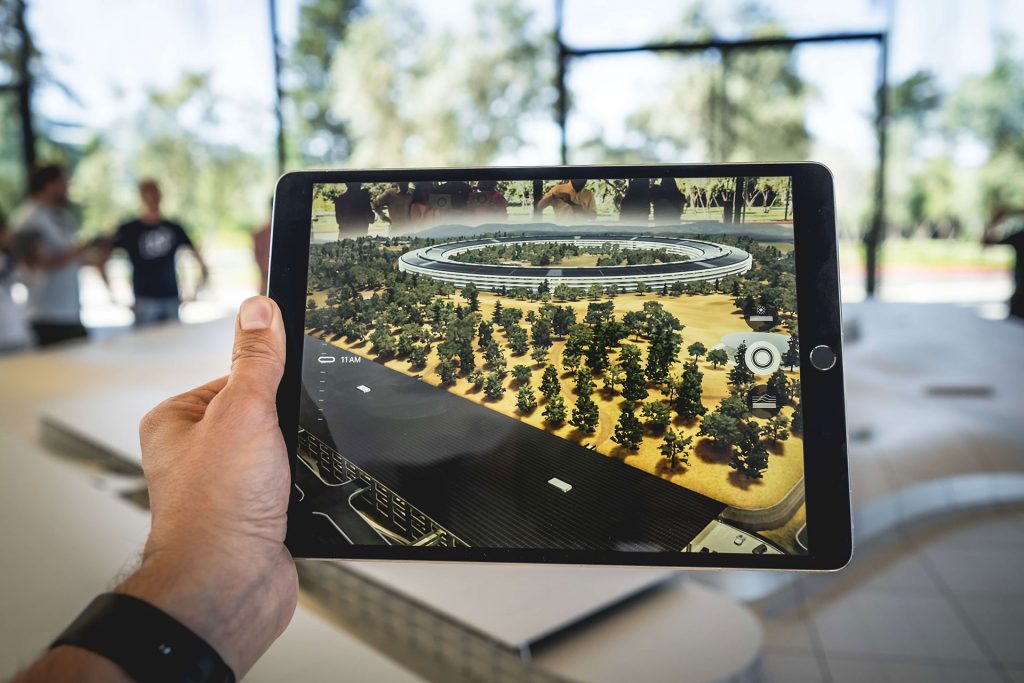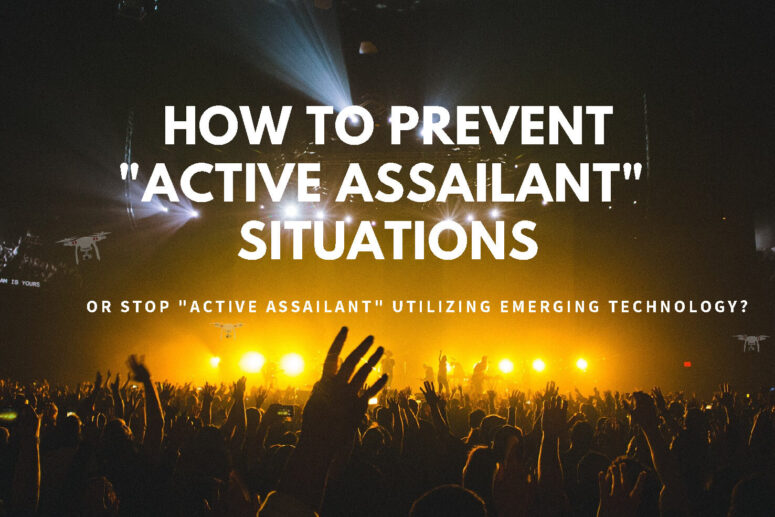Welcome to the final article for the year 2018 in the ‘Looking to the Future’ series where I discuss emerging technologies with experts from across various industries. As always, my goal is to share my ideas, knowledge and experience to receive feedback from you to continuously learn and improve.
Whilst there is a broad range of literature on the “Run–Hide-Fight” response to an Active Assailant situation, the theme of this article is “Emerging technologies that can prevent or stop Active Assailants”.
In this article, I welcome back Scott Taylor COO of Southern Cross Group, as we explore the all too real threat of an ‘active assailant situation’.
Typically, active assailant situations would involve the shooter using a gun or firearm to kill people in a compact but populated area. An Active Assailant is defined as an individual actively engaged in killing or attempting to kill people in confined and crowded areas and in most cases, there is no pattern or method to their selection of victims. It is also important to understand that it may also involve multiple attackers. From recently reviewed statistics, 96% of active assailants are male and 40% of active assailant incidents end in suicide.
However, the heinous act can be carried out using a weapon other than a gun, as witnessed in a recent knife rampage in Melbourne.
As reported by Sky News, a knife rampage took place in Melbourne in November this year which left one-person dead and two others wounded. The identified attacker was of Somalian origin and the incident was being treated as a terrorist attack. Of course, not all ‘active assailant’ situations are terrorist attacks or are carried out using a knife, as can be seen below.
Reported by the New York Times, a mass shooting took place in Australia this year that left a tiny community in a state of sorrow. Considered the worst mass shooting in Australia in two decades, the shooting claimed 7 lives and occurred in a village near Margaret River—a tourist town 170 -miles south of Perth. Many recommendations have been made following these two incidents to control ‘active shooter’ situations in Australia, with ‘gun control’ being the solution most proposed.
However, a lot more than ‘gun control’ may be required to prevent these situations or limit the damage caused by them when you consider the fact that Australia’s strict gun control laws could not prevent the mass shooting that took place in the village near Margaret River and that a knife was used to attack the police and bystanders in Melbourne. Perhaps, the best solution lies in the use of emerging technologies built for security purposes.
Additionally, it is prudent to mention there is the potential insider threat where ex or current employees are the assailants. This adds an additional layer of complexity as they have an awareness of your organisations security measures, the facility layout and operational routines.
Why the Use of Emerging Technologies is Your Best Bet to Avoid ‘Active Assailant’ Situations
Generally, deployment of law enforcement agencies is needed to bring the ‘active’ assailant situation to a halt. Most active assailant incidents last under 8 minutes, with the majority of the carnage occurring within a five-minute window (In military terms, “you have been ambushed”). However, since it typically takes 15 to 20 minutes for the law enforcement officers to arrive at the scene after being informed about the situation, there are chances that significant damage has already been done. The good news is that this can be reduced by deploying and using emerging technologies such as access control systems, artificially intelligent video surveillance, gunshot detection systems, drones, robots, mass notification system (MNS), and smart building technology.
One of the best ways to reduce the likelihood of an active assailant incident, a modern access control system ensures that only authorized people can enter your facility and that visitors check in, check out, and provide identification. This allows you to stay informed about who is in the building at all times, creates a layer of security and creates a historical record for future reference.
With an integrated artificially intelligent video surveillance system, it is easy to maintain situational awareness and quickly identify threats. The system makes it easy to detect suspicious activity, perform real-time assessment of threats, and respond to threats in an effective manner. An example of such a system is the Integrated Video Surveillance Solution of Cisco which makes globally accessible video monitoring of physical security from remote sites cost-effective.
With a gunshot detection system, you can limit the damage caused by an ‘active shooter’ situation. This is because the system detects and locates gunshots as soon as they are fired. Moreover, by connecting gunshot detection with notification to quickly alert security personnel about the situation and trigger notifications to building occupants, the system makes the response faster and more effective. The system also alerts the law enforcement outside of the facility to speed up response at all levels. If these technologies were combined with augmented reality (AR), the ability to see graphical images in your environment through special digital glasses or smartphone, then security personal could be visually directed on how to respond to an active shooter situation and prevent further casualties. Building occupants or event goers could be visually directed to safe-zones. I.e. places that are out of the direct line of fire of the shooter.
A gunshot detection system and intelligent video can be used to identify attackers, and with the use of drones, you can quickly home in on them and incapacitate/distract them using lethal and non-lethal components such as smoke bombs, tear gas, shot gun, tazers, glue foam, etc.
Fjorn Austin—a Texas-based company, has developed a drone called Chaotic Unmanned Personal Intercept Drone (CUPID) that is armed with a stun gun. According to the designer William Hurley the drone can stun intruders with ‘‘80,000 volts of electricity to render them incapacitated”. A version of the drone that uses pepper spray balls is also in the works.
An asset to public safety, drones can improve situational awareness in a shared space. With drones, it becomes easier to monitor and manage special events and assess crimes. Outdoor events typically involve a small security force trying to cover a large area and lot of people. Drones can improve event surveillance by mapping a venue prior to the event for security deployment purpose, helping security respond to all situations quickly and efficiently by giving them a 360° view of things, making it easier to search blind spots and corners, and deterring intruders.
A new drone invention is being pitched as a technology that can fend off attackers in schools. According to the inventor Skip Parish, the drone can receive alerts via special software and approach a subject, the shooter in our case, instantly. The software through which the drone receives alerts detects images like a gun using AI technology and identifies a potential attacker/shooter with facial recognition technology. Additionally, the drone can distract a shooter using in-built speakers.
Drones are also useful in delivering emergency first aid to treat pain and wounds. Equipped with instructions and a first aid/medical Kit, emergency drones allow a bystander to apply first aid to a victim before the medical team arrives. Additionally, researchers at the William Carey University in Mississippi are working on developing an emergency drone that could bring medical kits to victims in a mass casualty event faster than an ambulance.
The mass notification system (MNS) is another technology to prevent or control ‘active assailant’ situations. The MNS enables communication with large groups across multiple sites that may be impacted by an active shooter incident. Everyone on the facility gets the information they need to respond to danger and minimize its impact.
Using MNS to mass alert smart phones in the area and to direct/disperse them to the nearest safe zones in a managed order using GPS to avoid stampedes, panic, etc. can be a great option in an active shooter situation, especially if the situation occurs at large crowd public events and places such as shopping centers, train stations and schools/campus. It should also be noted that there has been previous examples of Active Assailants utilizing social media to draw people to the scene to provide additional potential victims and people need to overcome their natural response to tweet or post to Facebook with updates. Instead they should use the extra time to get better cover. Additionally, some people try to film or take pictures of an incident which is incredibly dangerous as they get “lens syndrome” and lose awareness.

Another technology that could prevent the assailant or limit the damage caused by them which I briefly mentioned earlier, is augmented reality (AR). A project is in the works at the McGill University in California, U.S to develop Augmented Reality Tools for Improved Training of First Responders. The purpose of this initiative is to improve communication between first responders and their coordinators during training scenarios. Augmented reality could be used to direct emergency responders to where the shooter is positioned and where victims are and to strategic positions at the scene. This also greatly helps with reality acquisition / stress inoculation with the training to help better prepare the first responders.

Finally, advancements in the Internet of Things (IoT) has led to the development of smart buildings—facilities with sensors and internet-connected devices that use their built-in intelligence to make spaces more comfortable, energy-efficient, and secure. Smart building technology can be useful in preventing an active shooter situation or at least minimizing its impact as the technology integrates video management, alarm intrusion, guard booths, emergency phones, physical barriers, and more to allow operators to better manage from command centers.
As seen above, Emerging technologies and better integration can help organizations to enhance their facility security to more quickly and effectively identify and respond to threats like active shooter situations. For more advice on how to leverage technology in your business, then please get in touch with Southern Cross Group.
About the Author
 Martin Sheridan begun his career in technical development and solution architecture, more recently he has developed his professional practice to include development of both commercial and technical strategy, leadership of substantial teams and delivery of major cultural change programs
Martin Sheridan begun his career in technical development and solution architecture, more recently he has developed his professional practice to include development of both commercial and technical strategy, leadership of substantial teams and delivery of major cultural change programs
He played diverse roles, including design, development and deployment of innovative software solutions with an eye to longer-term technological and commercial strategies to improve SDLC, time-to-market, time-to-value, efficiency and client satisfaction.


Comments